Seismology
Type of resources
Topics
Keywords
Contact for the resource
Provided by
Years
Formats
Representation types
Update frequencies
Scale
-

Synthetic and real dispersion measurements for paths across the Pacific, consists of 2 datasets; SS3DPacific_new - This is a data set of surface-wave dispersion measurements. The dispersion is measured between a synthetic reference seismogram (computed with normal-mode summation using the MINEOS software in the radial model stw105 from Kustowski et al., 2008), and a real observed seismogram. This data set is used by Latallerie et al. (2024) to build a Vs model of the Pacific upper-mantle with full 3D resolution and uncertainty using SOLA inversion (Zaroli 2016) and finite-frequency theory (Zhou 2009). Data are for a set of source-receiver pairs for frequencies ranging from 6 to 21 mHz, every 1mHz. The measurement algorithm uses the multi-taper technique (Thompson 1982). The first 5 Slepians are used (Slepian 1978). A datum is the average of measurements over these tapers, and the uncertainty is the standard deviation. SS3DPacificSyn_new - This is a data set of surface-wave dispersion measurements. The dispersion is measured between a synthetic reference seismogram (computed with normal-mode summation using the MINEOS software in the radial model stw105 from Kustowski et al., 2008), and a synthetic seismogram computed using the spectral element method software Specfem in the 3D model S362ANI from Kustowski etl al. (2018). This data set is used by Latallerie et al. (2024) in a synthetic tomography study to retrieve the Vs structure of the input 3D model S362ANI in the Pacific upper-mantle with full 3D resolution and uncertainty using SOLA inversion (Zaroli 2016) and finite-frequency theory (Zhou 2009). Measurements are provided for source-receiver pairs for frequencies ranging from 6 to 21 mHz, every 1mHz. The measurement algorithm uses the multi-taper technique (Thompson 1982). The first 5 Slepians (Slepian 1978) are used. A datum is the average of measurements over these tapers, and the uncertainty is the standard deviation.
-
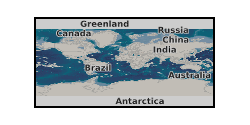
This is a collection of extracts from British newspapers describing earthquakes, mostly British. It contains original clippings, photocopies, and in a few cases manual transcriptions.
-

Field reports and macroseismic questionnaires for recent British earthquakes. As of 2003, data collection for this dataset is mostly digital.
-

This repository contains data and inversion results for the SOLA finite-frequency tomography of the Pacific upper-mantle in a synthetic setup. It is related to the paper by Latallerie et al., 2025 in Seismica and more information can be found in this publication. The code repository for the finite-frequency SOLA tomography can be found at Gitlab: https://gitlab.com/FranckLatallerie/sola_ffsw.git The dataset consists of Rayleigh wave phase delays (dispersion) measured on vertical component seismograms for earthquake-receiver pairs across the Pacific hemisphere. Synthetic phase delays are measured on synthetic reference seismogram computed with normal-mode summation using the MINEOS software (e.g. Masters et al., 2011) in the radial reference model stw105 (Kustowski et al., 2008). “Observed” seismograms are synthetic waveforms computed in the 3D model S362ANI (Kustowski et al., 2008), using the SEM solver SPECFEM3DGlobe. These synthetic waveforms have been provided by the GlobalShakeMovie project (Tromp et al., 2010) and were downloaded from the Earthscope (formerly IRIS) Data Management Center (IRIS DMC, 2012) using the network code SY and channel code MXZ. All network and stations used are listed in the Acknowledgements of the accompanying paper. The model represents the vertically polarised shear wave velocity (Vsv) 3D structure of the upper mantle in the Pacific. It is accompanied with full 3D resolution and uncertainty. The 3D tomographic grid is made of voxels of size 2 by 2 degrees laterally, and 25 km vertically, spanning the whole sphere, starting at the surface down to ~400km depth. In the files, the longitude is the fastest varying coordinate, then latitude, followed by radius. The midpoints of the voxels range between 1 and 359 for longitude and between 89 (north) to -89 (south) for latitude, both in steps of 2 degrees, while radius changes from 6358.5 to 5983.5 km inclusive, in steps of 25 km.
-

This repository contains data and inversion results for the SOLA finite-frequency tomography of the Pacific upper-mantle. It is linked to the paper by Latallerie et al., in prep, which follows one from the synthetic tomography paper (Latallerie et al., 2025, Seismica), which both provide more information. The code repository for the finite-frequency SOLA tomography can be found at Gitlab: https://gitlab.com/FranckLatallerie/sola_ffsw.git The dataset consists of Rayleigh wave phase delays (dispersion) measured on vertical component seismograms for earthquake-receiver pairs across the Pacific hemisphere. Phase delays are measured using synthetic reference seismogram computed with normal-mode summation using the MINEOS software (e.g. Masters et al., 2011) in the radial reference model stw105 (Kustowski et al., 2008). Observed seismograms were downloaded from the Earthscope (formerly IRIS) Data Management Center (IRIS DMC, 2012). All network and stations used are listed in the Acknowledgements of the README file. The model represents the vertically polarised shear wave velocity (Vsv) 3D structure of the upper mantle in the Pacific. It is accompanied by full 3D resolution and uncertainty. The 3D tomographic grid is made of voxels of size 2 by 2 degrees laterally, and 25 km vertically, spanning the whole sphere, starting at the surface down to ~400km depth. In the files, the longitude is the fastest varying coordinate, then latitude, followed by radius. The midpoints of the voxels range between 1 and 359 for longitude and between 89 (north) to -89 (south) for latitude, both in steps of 2 degrees, while radius changes from 6358.5 to 5983.5 km inclusive, in steps of 25 km.
-

Earthquake catalogue of all known UK events greater than magnitude 4 ML, and greater than 3 ML, post 1700. The catalogue covers the offshore areas as well as mainland UK, covering an area between 10 degrees West to 4 degrees East and 49 degrees to 62 degrees North. This includes all of Ireland and some earthquakes in northern France that were also felt in the UK. Earthquakes outside this area are also included if they were felt in the UK.
-
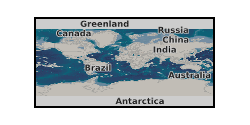
Recordings of earthquakes and other signals (such as quarry blasts, explosions, sonic booms and collapses) made by a network of seismometers and similar sensors across the UK. Recordings start in 1977 (with a few events recorded before this) and continue to the present day. Data is used for monitoring of seismic activity, studies of seismic hazard and scientific study of the Earth's interior. Data is freely available on request. Some data can be retrieved from the BGS AutoDRM (Automatic Data Request Manager) service. Time series data recorded by UK seismic networks.
-
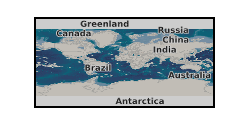
This dataset contains parametric data (epicentre, magnitude, depth, etc) for over one million earthquakes worldwide. The dataset has been compiled gradually over a period of thirty years from original third-party catalogues, and parameters have not been revised by BGS, although erroneous entries have been flagged where found. The dataset is kept in two versions: the complete "master" version, in which all entries for any single earthquake from contributing catalogue are preserved, and the "pruned" version, in which each earthquake is represented by a single entry, selected from the contributing sources according to a hierarchy of preferences. The pruned version, which is intended to be free from duplicate entries for the same event, provides a starting point for studies of seismicity and seismic hazard anywhere in the world.
-
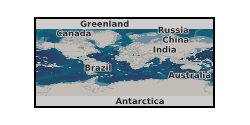
Dataset contains 3D synthetic seismic waveforms for axisymmetric global Earth velocity models. The waveforms were calculated using the finite difference approach with the PSVAxi algorithm (Jahnke, G et al., 2008. doi:10.1111/j.1365-246X.2008.03744.x). The Earthmodels are 1D and use PREM parameters except close to the core-mantle boundary (CMB) where 3D ultra-low velocity zones (ULVZs) are added to the PREM background model. ULVZ are thin layers of strongly reduced seismic velocities located at the CMB that have been observed in several regions of the Earth. The dataset models interaction of the seismic wavefield with ULVZ structure with varying elastic parameters (P-wave, S-wave velocity, density), location (location at source or receiver side along the great circle path), ULVZ length, shape (box, Gaussian, trapezoid) and height. Detailed description of the approach and the model space are given in Vanacore et al, (2016). Data format is SAC (Seismic Analysis Code). Vanacore, E.A., Rost, S., Thorne, M.S., 2016. Ultralow-velocity zone geometries resolved by multidimensional waveform modelling. Geophys. J. Int. 206, 659–674. doi:10.1093/gji/ggw114
-
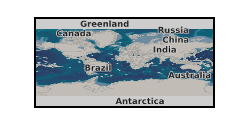
The National Seismological Archive (NSA) is the United Kingdom national repository for seismological material. It was created principally to preserve data from seismological observatories in the UK that have now closed. In many cases in the past records have been lost or destroyed when there is no longer anyone to look after them; the NSA provides a permanent home for these historical scientific documents, to preserve them for posterity. The principal collection consists of the seismograms stores from defunct observatories; also bulletins and reports from all over the world dating from the 1890s onwards, held in a variety of media, including earthquake-related newspaper cuttings, glass slides, microfilm, and comprehensive UK earthquake research material collected over a 30 year period. The archive has a public access room available for researchers and welcomes visiting scientists who wish to study material held in it. If it is impractical to visit, we may be able to supply data from it, subject to staff availability. One of the major projects of the archive has been the presentation of current knowledge of UK historical earthquake seismology material in a short series of reports, easily accessible to researchers. These are available for download as Adobe Acrobat Portable Document Format files (.pdf) from the NSA download page.
 NERC Data Catalogue Service
NERC Data Catalogue Service